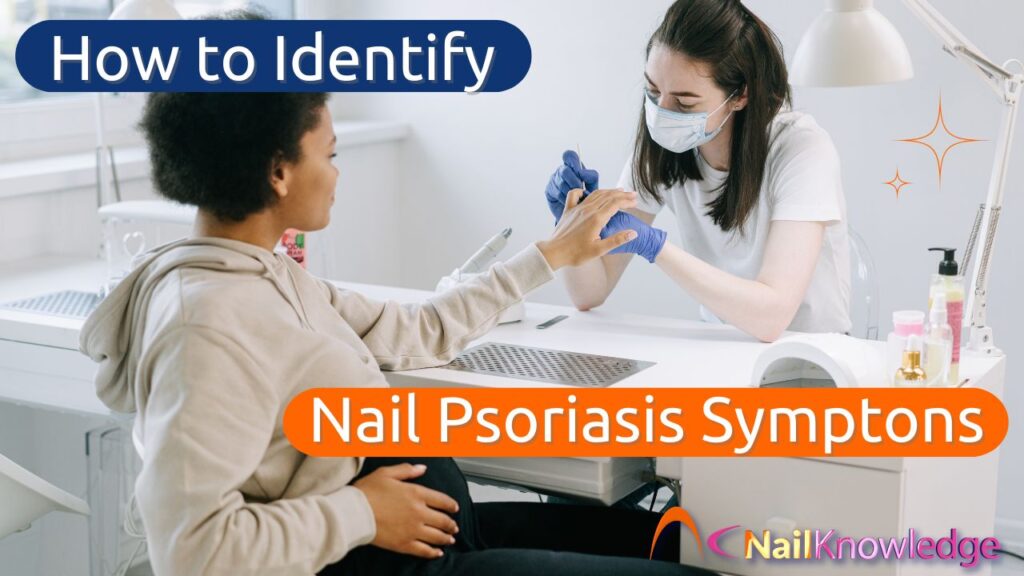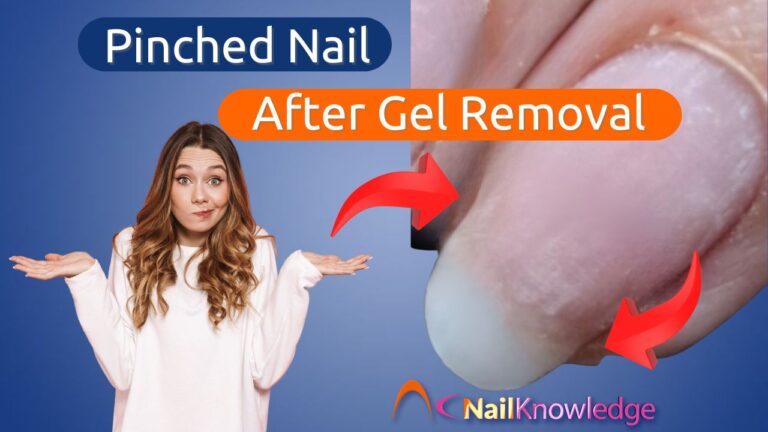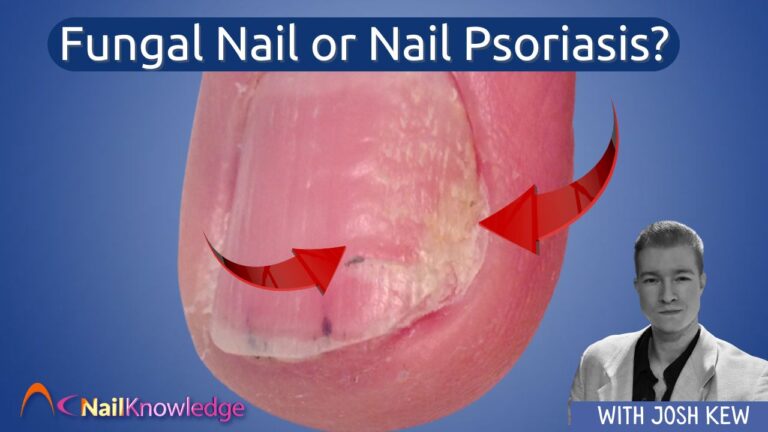How to Identify Nail Psoriasis Symptoms in Clients with Confidence and Care
En profesionales de la manicura, we often spend more time examining our clients’ nails than they do themselves. Whether you’re prepping for a manicura, applying gel, or giving a masaje de manos, you’re in a unique position to notice early warning signs of certain conditions, like nail psoriasis. It’s not uncommon for clients to be completely unaware of what’s happening under the polaco. Spotting potential nail psoriasis symptoms in clients isn’t about diagnosing but about being observant and informed so you can offer the best advice and ensure their wellbeing.
So how do you recognise the signs of nail psoriasis without alarming your client, and when should you recommend they speak to a healthcare provider? Let’s explore the clues, what they mean, and how to navigate the conversation professionally.
Recognising the Visual Clues of Nail Psoriasis in the Salon
Nail psoriasis can be tricky to spot because it shares symptoms with other nail conditions. Most commonly, it appears in individuals who already have psoriasis on their skin, but it’s not limited to them. Interestingly, only about 5 percent of people with psoriasis experience symptoms limited to the placa para clavos. However, those with psoriatic artritis, especially in fingers and toes, often show signs in their nails as well.
This condition isn’t contagious. It doesn’t come from bacterias, fungi, or any outside source. Instead, it’s rooted in the sistema inmunitario and often runs in families. That means it’s not a hygiene issue, which is an important distinction to make when explaining it to a client.
You’re not expected to identify medical issues. But spotting changes in the nails helps you offer guidance and shows your professionalism.
Changes in Colour and Surface Texture to Watch For
When scanning your client’s nails during a service, there are a few tell-tale signs that may point to nail psoriasis symptoms in clients. One of the most recognisable is the “salmon patch.” These look like tiny drops of oil or blood trapped under the nail plate and tend to appear pinkish or reddish in tone.
Other discolouration might include patches of green, yellow, or brown. These could be mistaken for infecciones fúngicas or bruising, but if seen in combination with other symptoms, they may be signs of psoriasis.
Surface texture is another clue. The nail plate might develop small pits or indentations, like pinpricks scattered across the surface. These pits can be random or neatly aligned, giving the nails an unusual, rough appearance even though they haven’t been filed.
In more advanced cases, the nail may become thicker, appear chalky underneath, or start crumbling at the borde libre. This brittleness is a result of weakened nail estructura, not neglect.
Nail Separation, Bleeding and Tenderness
If you notice the levantamiento de uñas del lecho ungueal, beginning at the free edge and pulling back toward the cutícula, this condition is known as onicólisis. It’s a common issue for those with nail psoriasis and can open the door to secondary infections.
You might also see hemorragias en astilla, tiny black lines running in the direction of nail growth. These are caused by broken capillaries in the nail bed and are usually harmless, but their presence along with other signs strengthens the case for referring the client to a medical professional.
Redness in la lúnula (the half-moon at the base of the nail) and inflamación alrededor del pliegues ungueales (known as paroniquia) can also be part of the picture. These symptoms may make the nails feel sore or tender, which the client might casually mention in conversation without realising it’s a sign of something more.
Communicating Your Concerns Without Alarm
When you’re faced with several of these symptoms at once, it’s wise to gently suggest your client consult a dermatólogo o podólogo. The key here is tone. Avoid sounding alarmed or overly clinical. Instead, speak in calm, neutral language that keeps the focus on their health.
For example, you could say: “I’ve noticed a few changes in your nails that I think are worth showing to a dermatologist. It’s nothing to panic about, but it could be something like nail psoriasis, and they’ll be able to give you a clear answer.”
This approach respects the client, keeps their dignity intact, and shows that you’re looking out for their overall wellbeing, not just their manicure.
Safe Practices for Nail Psoriasis in the Salon Environment
Despite its appearance, nail psoriasis is not caused by an infection, and it cannot be passed from one person to another. That means it’s completely safe to carry out nail services, as long as the client is comfortable and the nail bed is not open or actively inflamed.
In fact, well-applied artificial recubrimientos de uñas can help protect the nail from further trauma. Gel UV manicures, acrylic superposiciones, and other professional coatings are not harmful to the condition. Just be sure the nail isn’t elevación or damaged to the point of exposing the nail bed, as that could invite irritation or infection.
Everyday Nail Care Advice for Clients with Nail Psoriasis Symptoms
Although there is no cura, many clients benefit from practical, everyday care tips to manage nail psoriasis. Encourage them to keep nails short and the free edge smoothly filed. Suggest wearing gloves while doing housework or gardening, especially during colder months. A high-quality skin conditioner can help prevent cracking and dryness, which often aggravate symptoms.
Comfortable, well-fitting shoes are also important, particularly for those who exercise regularly. For clients open to medical treatment, let them know there are therapies available, from topical creams to injections and light treatments. This may offer significant relief, even if results take time to appear.
Cuándo remitir a su cliente
Remitir a un podólogo si su cliente tiene:
- Dolor, hinchazón, sangrado o sensibilidad alrededor de la uña
- Uñas que huelen mal o parecen infectadas
- Síntomas que no mejoran tras el autotratamiento
- Cambios en varias uñas, especialmente si parecen simétricas
- Antecedentes personales o familiares de psoriasis o afecciones cutáneas
- Cualquier cambio inusual o preocupante del que no esté seguro
Think your client has a fungal nail infection? It might actually be nail psoriasis. Learn how to spot the difference, avoid misdiagnosis, and protect salon hygiene.
Final Thoughts on Spotting Nail Psoriasis Symptoms in Clients
As a beauty professional, you’re not there to diagnose enfermedades, but your role can still be powerful. By being informed about nail psoriasis symptoms in clients, you’re better equipped to support them with empathy, professionalism and the right advice.
Clients trust you not just for beautiful nails, but for your expertise. When you notice changes in nail texture, colour, or structure, you have the opportunity to guide them toward the care they might need, without judgment or alarm. That’s a mark of true professionalism.
Fungal Infection or Nail Psoriasis? Here’s How to Tell the Difference
Think your client has a fungal nail infection? It might actually be nail psoriasis. Learn how to spot the difference, avoid misdiagnosis, and protect salon hygiene.
- Profesional de las uñas
- Infección fúngica
- Sistema inmunitario
- Dermatólogo
- Recubrimiento de uñas
- Masaje de manos
- Levantamiento de uñas
- Onicólisis
- Inflamación
- Placa ungueal
- Paroniquia
- Psoriasis
- Artritis
- Borde libre
- Pliegues de uñas
- Podólogo
- Manicura
- Estructura
- Lecho ungueal
- Bacterias
- Cutícula
- Superposición
- Elevación
- Polaco
- Gel UV
- Base
- Curación











